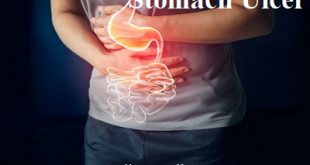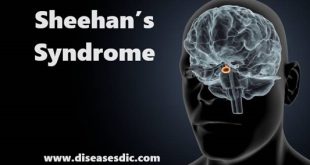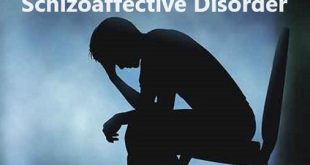Scoliosis – Definition
Scoliosis is a condition involving an abnormal sideways curvature of the spine. It can be caused by congenital, developmental, or degenerative problems, but most cases of scoliosis actually have no known cause called idiopathic scoliosis. Scoliosis usually develops in the thoracic spine or the thoracolumbar area of the spine.
Anterior and Posterior view of the Scoliosis patient
The curvature of the back may develop as a single curve (shaped like the letter C) or as two curves (shaped like the letter S). Scoliosis appears during adolescence and indicators include unevenness in the shoulder height, shoulder blades, rib cages, and hips.
Patterns of scoliosis
There are four common patterns of curvature in scoliosis, although lateral curves can appear anywhere along the spinal column.
- Right Thoracic Scoliosis
In this type, the major scoliosis is concentrated in the thoracic (upper or midback) region and curves to the right. There may also be a less severe counter curve to the left in the lumbar (lower back).
- Left Lumbar Scoliosis
The major curve is to the left in the lumbar. There may be a less extreme curve to the right in the thoracic.
- Right Thoracolumbar Scoliosis
The major curve is to the right in both the lower thoracic and the lumbar. This is commonly known as a C curve. (It looks like a C from the front, a reverse C from the back.)
- Right Thoracic-left Lumbar Scoliosis
The major curve is in the thoracic region, with an equal counter curve to the left in the lumbar region. This is commonly known as an S curve. (It looks like an S when viewed from the front.)
For unknown reasons, most curves in the thoracic bend to the right and most curves in the lumbar arch to the left. There can be more than one compensating curve anywhere along the spine, even in the cervical spine (neck).
Cobb angle
The orthopedic “Gold Standard” for the assessment of scoliosis is the Cobb angle, which is measured by determining the most-tilted spinal bones (vertebrae) in each curve.
Cobb angle lines are drawn along the top of the superior tilted vertebra and the bottom of the inferior tilted vertebra. Two more lines are drawn at an angle of 90 degrees to these lines, perpendicular so that they intersect. The resulting angle is measured, and the number is expressed in degrees.
While the Cobb angle is the current standard for scoliosis measurement, it’s important to recognize three significant points.
Historical background of scoliosis
Hippocrates wrote about spinal curvature throughout his medical literature, although there was no clear distinction between different types of the curve at this time. He even developed treatment methods and devices for spinal correction, the most well-known being his ‘Hippocratic ladder’ and ‘Hippocratic board’. This research was furthered by Galen in the 2nd century AD, who is considered to be an early pioneer of spinal research, and who is said to have first coined the term scoliosis (from which the modern term derives).
The modern Boston brace (designed circa 1972 in Massachusetts) is widely used to treat idiopathic scoliosis, particularly in children, by halting curve progression. The concept of bracing for scoliosis, however, has been around far longer than the 1970s, with Ambroise Paré suggesting the use of a metallic brace for spinal correction during the Renaissance era. Known as the ‘Father of Modern Surgery’, Paré was the first to use continuous bracing as a form of treatment for scoliosis and was also the first to recognize that this was not useful once the patient had reached maturity. Despite his insistence on the bracing method, Paré never rejected traction therapy, continuing to use this in his treatments, and also insisting on the importance of exercise for healthy spinal development and curve correction.
Epidemiology of Scoliosis
Adolescent idiopathic scoliosis (AIS), which develops between the ages of 10 and 18 years, accounts for approximately 90% of cases of idiopathic scoliosis. Infantile idiopathic scoliosis develops before the age of 3 years, with a male-to-female ratio of 3:2, and accounts for <1% of idiopathic scoliosis cases, while juvenile idiopathic scoliosis accounts for the remainder and develops between the ages of 3 and 10 years.
In the US, the reported prevalence of patients with a curve of >10° ranges from 0.5 to 3 per 100 children and adolescents, and the estimated prevalence of patients who will require treatment for spinal deformity ranges from 0.5 to 3 per 1000. In the UK, prevalence of idiopathic scoliosis ranges from 0.1% in 6- to 8-year-olds, 0.3% in 9- to 11-year-olds, and 1.2% in 12- to 14-year-olds. The male-to-female ratio is thought to be equal for mild curves. However, curve progression requiring treatment is much more common in female adolescents, with an estimated ratio of 7-8:1. Additionally, the number of affected girls increases exponentially with the magnitude of the curvature.
Causes of scoliosis
Scoliosis without a known cause is what doctors call “idiopathic”. Some kinds of scoliosis do have clear causes. Doctors divide those curves into two types — structural and nonstructural.
In nonstructural scoliosis, the spine works normally but looks curved. Why does this happen? There are a number of reasons, such as one leg’s being longer than the other, muscle spasms, and inflammations like appendicitis. When these problems are treated, this type of scoliosis often goes away. In structural scoliosis, the curve of the spine is rigid and can’t be reversed.
Causes include:
- Cerebral palsy
- Muscular dystrophy
- Birth defects
- Infections
- Tumors
- Genetic conditions like Marfan syndrome and Down syndrome
Congenital scoliosis begins as a baby’s back develops before birth. Problems with the tiny bones in the back, called vertebrae, can cause the spine to curve. The vertebrae may be incomplete or fail to divide properly. Doctors may detect this condition when the child is born. Or, they may not find it until the teen years. Family history and genetics can also be risk factors for idiopathic scoliosis. If you or one of your children has this condition, make sure your other kids are screened regularly.
Symptoms of Scoliosis
Signs and symptoms of scoliosis may include:
- Uneven shoulders
- One shoulder blade that appears more prominent than the other
- Uneven waist
- One hip higher than the other
If a scoliosis curve gets worse, the spine will also rotate or twist, in addition to curving side to side. This causes the ribs on one side of the body to stick out farther than on the other side.
Symptoms in adolescents
Adolescent idiopathic scoliosis is the most common form of scoliosis and affects children who are at least 10 years old. Idiopathic means that there is no known cause. Symptoms can include:
- The head is slightly off-center
- The ribcage is not symmetrical – the ribs may be at different heights
- One hip is more prominent than the other
- Clothes do not hang properly
- One shoulder, or shoulder blade, is higher than the other
- The individual may lean to one side
- Uneven leg lengths
Symptoms in infants
Symptoms can include:
- A bulge on one side of the chest
- The baby might consistently lie curved to one side
- In more severe cases, the heart and lungs may not work properly, and the patient may experience shortness of breath and chest pain
Complications
While most people with scoliosis have a mild form of the disorder, scoliosis may sometimes cause complications, including:
- Lung and heart damage: In severe scoliosis, the rib cage may press against the lungs and heart, making it more difficult to breathe and harder for the heart to pump.
- Back problems: Adults who had scoliosis as children are more likely to have chronic back pain than are people in the general population.
- Appearance: As scoliosis worsens, it can cause more noticeable changes – including unleveled shoulders, prominent ribs, uneven hips, and a shift of the waist and trunk to the side. Individuals with scoliosis often become self-conscious about their appearance.
Diagnosis and Testing
Risser-Ferguson Method: The Risser-Ferguson method draws dots in the center of the superior, apical, and inferior vertebrae, and lines to connect them.
CT Scans: A CT scan can measure scoliosis three-dimensionally, but the high levels of radiation limit this method to pre-surgical evaluations.
EOS 3-D X-ray: One new measurement technology is the EOS 3-D x-ray imaging system, which allows for a much more precise measurement of the spin with significantly less radiation than a CT scan.
ScolioScan 3-D Ultrasound: Developed by researchers at Hong Kong Polytechnic, this new system has been shown to be very accurate in measuring scoliosis without the use of x-rays.
MRI: It’s possible to measure scoliosis on an MRI, and while there is no radiation exposure, the high cost precludes its common use. Typically, MRI is only used for scoliosis when an underlying pathology, such as a spinal cord tumor, is suspected.
Surface Topography: Scoliosis can also be assessed through surface topography, which is a system for measuring the shape and contours of the back. Although effective, the technology is expensive and cannot be compared to the Cobb angle.
Scoliometry: Scoliometry is a simple and efficient way to conduct scoliosis screening, and has some use as a monitoring tool. If sociometry measurements increase over time, this may be an indication to take an x-ray. If the measurements are stable or improving, it may be safe to assume that a re-x-ray is not needed.
Treatment and Medications
The following factors will be considered by the doctor when deciding on treatment options:
- Sex – females are more likely than males to have scoliosis that gradually gets worse.
- The severity of the curve – the larger the curve, the greater the risk of it worsening over time. S-shaped curves also called “double curves,” tend to get worse over time. C-shaped curves are less likely to worsen.
- Curve position – if a curve is located in the center part of the spine, it is more likely to get worse compared with curves in the lower or upper section.
- Bone maturity – the risk of the curve worsening is much lower if the patient’s bones have stopped growing. Braces are more effective while bones are still growing.
Casting: Casting instead of bracing is sometimes used for infantile scoliosis to help the infant’s spine to go back to its normal position as it grows. This can be done with a cast made of plaster of Paris. The cast is attached to the outside of the patient’s body and will be worn at all times. Because the infant is growing rapidly, the cast is changed regularly.
Braces: If the patient has moderate scoliosis and the bones are still growing, the doctor may recommend a brace. This will prevent further curvature, but will not cure or reverse it. Braces are usually worn all the time, even at night. The more hours per day the patient wears the brace, the more effective it tends to be. The brace does not normally restrict what the child can do. If the child wishes to take part in physical activity, the braces can be taken off.
When the bones stop growing, braces are no longer used. There are two types of braces:
- A thoracolumbosacral orthosis (TLSO) – The TLSO is made of plastic and designed to fit neatly around the body’s curves. It is not usually visible under clothing.
- Milwaukee brace – this is a full-torso brace and has a neck ring with rests for the chin and the back of the head. This type of brace is only used when the TLSO is not possible or not effective.
Scoliosis surgery (spinal fusion)
In severe cases, scoliosis can progress over time. In these cases, the physician may recommend spinal fusion. This surgery reduces the curve of the spine and stops it from getting worse.
Scoliosis surgery involves the following:
- Bone grafts – two or more vertebrae (spine bones) are connected with new bone grafts. Sometimes, metal rods, hooks, screws, or wires are used to hold a part of the spine straight while the bone heals.
- Intensive care – the operation lasts 4-8 hours. After surgery, the child is transferred to an ICU (intensive care unit) where they will be given intravenous fluid and pain relief. In most cases, the child will leave the ICU within 24 hours but may have to remain in the hospital for a week to 10 days.
- Recovery – children can usually go back to school after 4-6 weeks and can take part in sports roughly 1 year after surgery. In some cases, a back brace is needed to support the spine for about 6 months.
The patient will need to return to the hospital every 6 months to have the rods lengthened – this is usually an outpatient procedure, so the patient does not spend the night. The rods will be surgically removed when the spine has grown. A doctor will only recommend spinal fusion if the benefits are thought to outweigh the risks. The risks include:
- Rod displacement – a rod may move from its correct position. Although not uncomfortable, the patient may need further surgery.
- Pseudarthrosis – one of the bones used to fuse the spine into place does not stick properly. Some patients may experience mild discomfort, and the spine will not be corrected as successfully. Further surgery may be needed.
- Infection – this is usually treated with antibiotics medication.
- Nerve damage – damage occurs to the nerves of the spine. Results can range from mild, with numbness in one or both legs, to paraplegia (loss of all lower bodily functions). A neurosurgeon may be present for scoliosis surgery.
Prevention
Except for osteoporosis-related scoliosis, most cases of scoliosis cannot be prevented. There is no evidence to suggest that improving posture or doing exercises can prevent it. Measures to increase bone mass and strengthen bones, including getting enough calcium and vitamin D, doing regular weight-bearing exercise, and, taking bone-building medications may help to prevent cases caused by spinal fractures. In some cases, early detection may prevent the condition from getting worse.
You should examine your child’s spine regularly, starting in infancy, and talk to a health care professional about any concerns. School nurse evaluations and regular pediatric examinations also can identify cases of scoliosis.
 Diseases Treatments Dictionary This is complete solution to read all diseases treatments Which covers Prevention, Causes, Symptoms, Medical Terms, Drugs, Prescription, Natural Remedies with cures and Treatments. Most of the common diseases were listed in names, split with categories.
Diseases Treatments Dictionary This is complete solution to read all diseases treatments Which covers Prevention, Causes, Symptoms, Medical Terms, Drugs, Prescription, Natural Remedies with cures and Treatments. Most of the common diseases were listed in names, split with categories.








Dear sir or mam please tell me about the proper treatment of scoliosis…
First You should consult with your orthopaedist to know the best treatment which is suitable to your scoliosis conditions. He or she can give you a brace or if your scoliosis angle is high they might do surgery.
Braces are not designed to correct the curve. They are used to help slow or stop the curve from getting worse with good back brace management treatment.
Surgery involves correcting the curve back to as close to normal as possible and performing a spinal fusion to hold it in place. This is done with a combination of screws, hooks, and rods that are attached to the bones of the spine to hold them in place. The surgeon places bone graft around the bones to be fused (spinal fusion) to get them to grow together and become solid. This prevents any further curvature in that portion of the spine.
Please I would love to know if scoliosis affects fertility and reproduction. Thanks.
It may affect because scoliosis would damage the spinal nerves that pass through the lumbar region and so fertility is not possible.
I’m 72; have a dbl. scoliosis. Nobody fused anything way back when I was growing up. Good thing too. Fusing is answer these doctors want to do. My back is still mobile. And I’m glad of it. Whatever isn’t fused starts to slide above & below, then they say they want to fuse more. Leave it alone & exercise. I had 2 children, no problem. Good Luck.
There is no physical activity treatment for scoliosis in this section. However strengthening and stretching muscles are essential for such disease.
Is it possible that scoliosis may have been caused by bacterial spinal meningitis as a child?
Doctors don’t know what causes the most common type of scoliosis — although it appears to involve hereditary factors, because the disorder tends to run in families. Less common types of scoliosis may be caused by:
Neuromuscular conditions, such as cerebral palsy or muscular dystrophy
Birth defects affecting the development of the bones of the spine
Injuries to or infections of the spine (this may include bacterial meningitis in spine)
Any physiotherapy approach to scolosis than muscle strenghining and improve balance and coordination.
Physiotherapy for scoliosis extends beyond muscle strengthening and balance improvement. Additional approaches may include stretching exercises for flexibility, postural training to enhance body mechanics, and breathing exercises for optimal lung function. Manual therapy, practices like Pilates or Yoga, and collaboration with orthopedic specialists for bracing support are also part of a comprehensive physiotherapy plan tailored to individual needs and the severity of scoliosis. Consultation with a qualified physiotherapist is essential for personalized guidance.
Is there any herbal medicine can cure scoliosis?
only the pain generated due to covid can be reduced using herbal medicines but it can’t be completely cured by this way.